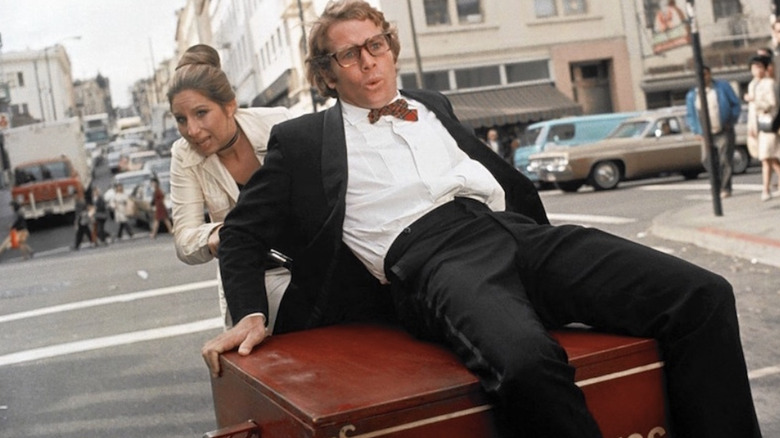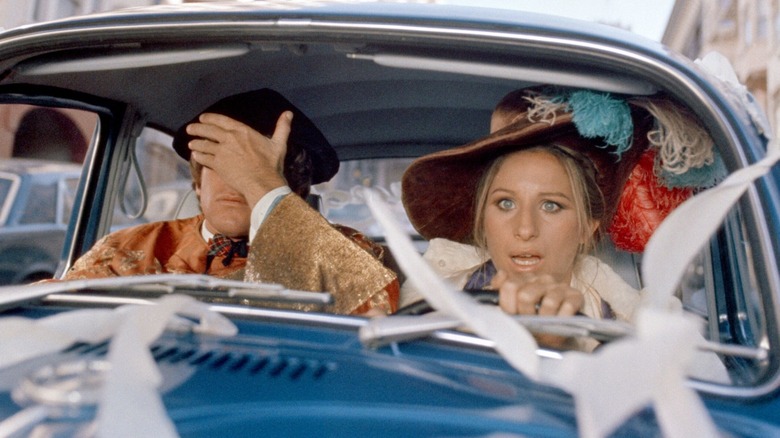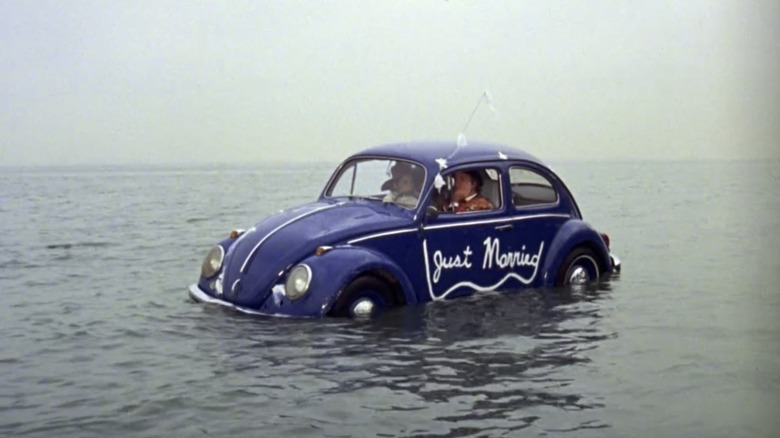The Chase Sequence In What's Up, Doc? Is The Best Action Scene Ever
(Welcome to Best Action Scene Ever, a column dedicated to breaking down the best, most effective action sequences throughout the genre. In this edition, we give some well-deserved flowers to one of the greatest screwball comedies ever made, "What's Up, Doc?," and its comedic masterclass of a climactic chase sequence.)
At this point, many of the movies and shows covered in this column have shared a number of things in common. Each entry is commonly considered (or ought to be, at least) among the finest action scenes ever filmed. They all have something to teach us about the myriad of ways to properly communicate character through action. But, admittedly, the vast majority of choices have also resided more or less within the same tone and genre. That's why this latest entry serves as a much-needed reminder to upend our narrow assumptions of what constitutes the best action and broaden our horizons.
"What's Up, Doc?" may not be the first film (or even fifth) to come to mind in discussions of the late, great director Peter Bogdanovich's filmography, but don't take that as a slight against what he managed to accomplish in the 1972 film — seemingly on little more than a whim and a dare. With the advantage of stars Ryan O'Neal and Barbra Streisand as the co-leads, practically oozing chemistry in their every second of screentime together, the filmmaker anchored an absolute farce of a story through Streisand's whirlwind agent of chaos Judy Maxwell, who descends upon a hotel, targets O'Neal's nerdy, straight-laced, and unwittingly charming musicologist Howard Bannister, and unleashes a hurricane of hijinks that starts with four identical overnight bags filled with extremely different belongings.
These all come together in one brilliant extended sequence that begins in the streets of San Francisco and ends in the bay.
The scene
One gets the sense pretty early on in "What's Up, Doc?" that all the most ridiculous situations showcased in the film are little more than a normal day in the life of Judy Maxwell. Poor Howard, rebranded as "Steve" by Streisand's unhinged and unwelcome interloper, wants nothing more than to win a grant for his musicology research alongside his plain but doting fiancée Eunice Burns (Madeline Kahn). Instead, he unwittingly becomes a pawn in a much grander and stranger set of circumstances. As if it weren't complicated enough when Judy bursts into his life and immediately upsets his simple, neat-and-tidy existence by impersonating his fiancée and ingratiating herself with Howard's colleagues/competition, multiple different parties stage their own hilarious attempts to retrieve each of the four distinctively plaid suitcases at the center of all the action.
By the time dangerous jewel thieves and shady government spies interrupt a dinner party as all the movie's disparate plot threads converge on this one unfortunate location, Bogdanovich raises the bar even higher by unleashing one of cinema's greatest and most hilarious chase sequences that perfectly melds all sorts of stunt-driven, high-wire action with a nonstop barrel of laughs. After somehow making their escape with all four overnight bags, Judy and Howard hop aboard a delivery bike and set off a chain of events that progressively becomes sillier and sillier with each passing moment. There's the unforgettable gag involving a ladder and an unfortunately-placed pane of glass, Judy and Howard carjacking a Volkswagen Beetle from a just-married couple, the destruction of a large swatch of San Francisco (some of which actually was damaged by the production, much to the city's chagrin), and a never-ending cascade of feats that constantly forces viewers to ask, "How did they even film all this?"
Why it works
Do you ever wonder why action and comedy tend to go so well together? That's because both genres are linked by setups and payoffs. Any good joke or instance of physical comedy needs a steady build-up to the punchline, carefully guiding our expectations one way before ultimately either following through or subverting our assumptions at the last possible moment. Action truly is no different, as any effective set piece also relies on the notion of cause and effect.
Observant viewers will quickly notice a recurring pattern in "What's Up, Doc?" as Judy and Howard attempt to lose the pursuing cars hot on their heels. Take the ladder and pane of glass gag, which mines all sorts of laughs out of the close calls and frantic expressions of the workers who just want to do their jobs without getting run over. With three separate cars in pursuit of our bumbling heroes (a number not chosen at random), that means we always get three sets of moments where it seems like — for example — that giant "X" taped onto the glass is about to get shattered in spectacular fashion. When the miraculous happens and it seems like these innocents will escape unscathed, audience expectations are finally rewarded when the poor sap hanging from the banner falls down and right through that satisfyingly fragile (and hilariously unexplained) pane of glass.
This trend repeats itself over and over again throughout the chase, from the cars smashing into that one bystander's van in particular to the drivers conveniently vaulting over that bit of wet cement (except for the last one, of course, which drives right through it and ruins that worker's entire day) to, finally, the cars plunging off the pier and into the Port of San Francisco.
The key moment
As much as the location of San Francisco was chosen as a spoof of the classic car chase featured in "Bullitt" (which will soon get its time in the sun with this column, I promise!), the setting lends a genuine and authentic sense of tension and stakes to the action — as heightened and exaggerated as it obviously is. Filmed on-location and with the expert help of an entire team of stunt people, the climax of "What's Up, Doc?" is most notable for making full use of the steep hills and famous locations the downright cinematic city is so well-known for.
The claustrophobic narrowness of the streets themselves adds even more obstacles for the main characters to deal with, but Bogdanovich (aided by a script from Buck Henry, David Newman, and Robert Benton) litters each specific segment of the chase with moments that constantly use the geography to its advantage. Judy forcing Howard to drive up a ramp and hide in plain sight among other Beetles loaded up on a truck is an all-timer of a gag, as is the moment when all the cars drive down the steps of Alta Plaza Park, but nothing competes with the killer punchline to this entire fruitless chase — all of the cars plunging headfirst into the water, punctuated by Streisand's self-confident "We can make it!" as they try to jump onto a departing ferry ... only to offer up a resigned "I don't think we can make it" at the point of no return.
As much as the entire movie remains a high-water mark in slapstick comedy, it's telling that this car chase puts similar sequences in modern action blockbusters to shame. Bogdanovich isn't reinventing the wheel here. By understanding the basics, "What's Up, Doc?" became an instant classic.


